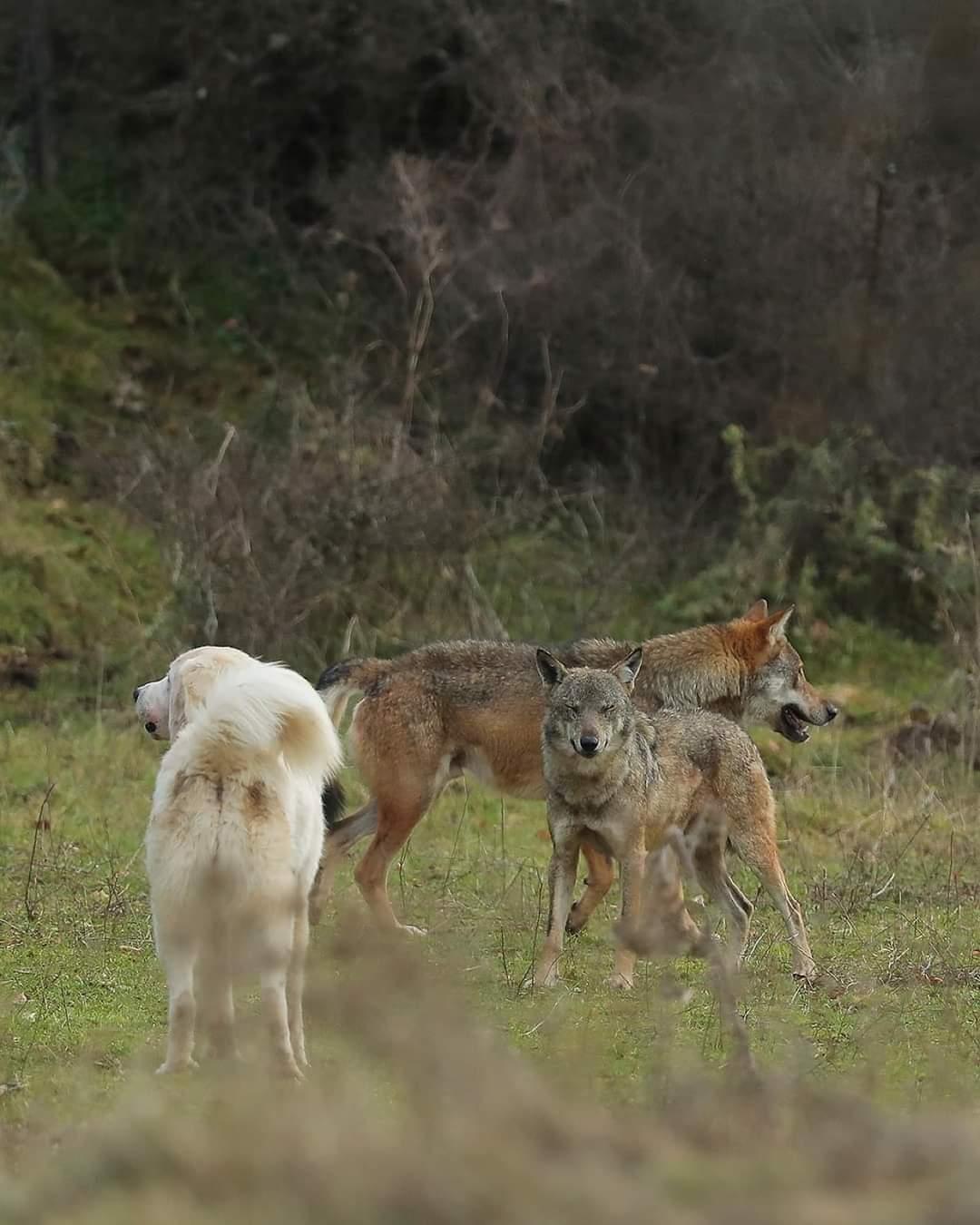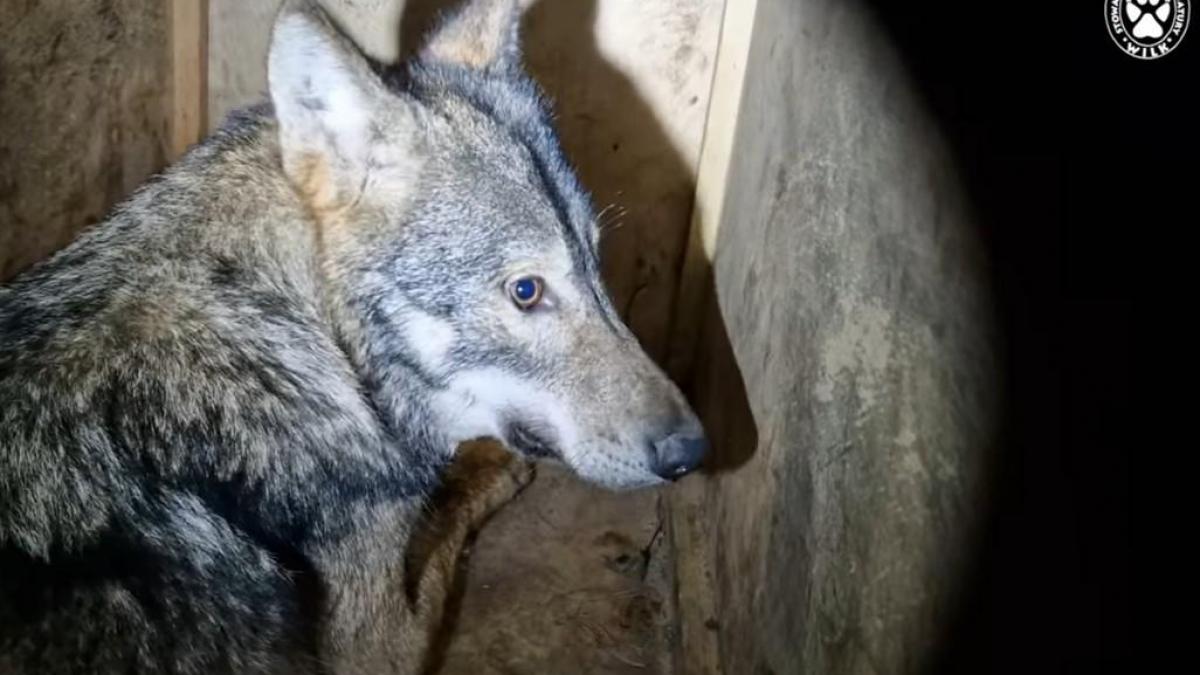We have already discussed the many and varied factors that can affect the effectiveness of protection in our regions. We would now like to go into greater depth by focusing on what we call "living" protection, i.e. the use of living beings such as guardian dogs. We also look at the method of guardian dog packs, as practised culturally and traditionally in other countries where wolves and various natural predators have always been present. It is extremely important to understand the difference between "mechanical" protection, such as fences (which are not changing much and whose installation and electrification are regulated), and protection that involves living beings.
Logically, everything to do with living beings is constantly evolving, requiring adjustment, reflection, questioning, frequent adaptation and long-term work. Today, the methods using living beings (dogs) is still the best way to prevent mass attacks and repeated losses, and to ensure the least possible problematic coexistence with natural predators. The intervention of guardian dogs, at an early stage of an approach or attempted attack by wolves, can slow it down, stop it or prevent losses from becoming too important. However, it is hugely important to understand that the presence of dogs will not always prevent a loss. Indeed, when a sheep is left out, ails to enter the electrified pen or close to where the wolf launches its "offensive", it can be fatal, through a "lightning" attack (even in the presence of guardian dogs and a shepherd). We urgently need to understand that no protection measures will ever be infallible ! It is the combined use of "living and mechanical protection" (dogs/shepherds + electrified fences, with fladrys or foxlights), as well as good annual monitoring of the measures used and knowledge of the wolf pack present on the territory (functioning/strength/evolution) that can enable losses to be sharply limited, or even no attacks at all. However, this stagnation or absence of losses will not be immutable, but always evolving over the months and years.
Guardian dogs are often cited as the best herd protection measures. However, if they are to be as effective as possible, there are a number of parameters to be taken into account. In addition to the aforementioned environment, topography and weather, working with living beings requires an excellent knowledge of the species, its instincts/behaviors/codes, its functioning and its needs. The dog should come, imperatively, from a dog breeder farm where the ancestors have always been (or at least over many generations) in the protection "business". Genetics is of great importance, as it determines instincts (the protective one for exemple), unlike behaviors (for which only fixed motor patterns and reflexes are innate). Puppies must be born and grow up surrounded by the herd, whether sheep or cattle, so that they can be considered "their pack" and protected as such. The education of their mother and other members of the dog pack during the first three months of life is also very important, since dogs and wolves alike learn by observing and reproducing what other adult members do (imitation). The first six months of life are often crucial in the development of puppies, and mistakes must be avoided at all costs during this crucial period. The education given by the human (breeder) must therefore be based on a thorough knowledge of the canine environment and proceed harmoniously, with good socialization, a healthy introduction to the various stimuli and to everything the dog is likely to encounter during its future life, on the farm and in the mountain pastures (other animals, humans etc.). The official Swiss program, which was admired the world over, had taken all these factors into account. The fact that the Confederation wants to abandon it in favor of cantonal programs, which will have to be set up quickly (with much lower financial resources), could therefore be a serious step backwards, with potentially more negative consequences.
A dog, like a wolf or any other living creature, is also a unique being, with its own upbringing, personality and character, and which has lived (and will live) its own experiences. This is an eminently important factor when a farmer forms a guardian dogs pack, as almost all farmers do in countries or regions that have always coexisted with natural predators. It's a question of tradition, of culture, of mentalities inherited from previous generations, a protection that bears fruit : the number of losses is quite low, in Abruzzo (Italy) for example, with less than 10 losses per year, or even zero for some farms. The use of guardian dogs, even if there are only one or two of them, must therefore be based systematically on an in-depth study of the situation on the mountain pasture : farming method applied, animals to be protected, environment, topography and everything to do with knowledge of the wolf pack present on the territory. The dog(s)' personality, character, genetics, the understanding between dogs, the age, the sex, the reproductive period (heat and related problems) and the state of health and emotional state must all be studied and taken into account.
Several farmers using a guardian dogs pack have told us about their experience. Their opinions are not yet widely heard, either in France or in Switzerland, but we should really listent to them if we want to understand and to progress in the field of protection with living creatures, and achieve the best possible efficiency. Selecting the dogs that will make up a future protection pack requires, once again, sound knowledge and also depends on all the factors previously mentioned, in particular the wolf pack, its functioning, numbers and evolution. The farmer must therefore take great care to select individuals specific to the future conditions in which they will have to evolve. It's a painstaking task, and one that has a major bearing on the famous effectiveness of protection ! Careful selection of the dogs' personalities, age and sex, as well as the way they get along and function in a pack, to ensure that they complement each other and encourage mutual aid, support and collaboration. It's an extremely interesting challenge, and shows just how difficult it is to work with living beings to achieve the best possible results. They also carry out tests, sometimes changing the dogs after a certain number of days/weeks on the mountain pasture, to give them a rest, or trying to leave the electrified park open to allow the dogs to come and go more easily, etc. The involvement and willingness of these farmers to look for combinations and solutions, and to try things out, will enable us to find the keys, even if this won't be applicable everywhere. In fact, some farmers don't want to get involved/work with dogs in this way, are not at ease with the guardian dog environment (knowledge, practice), don't have the facilities to manage dogs outside the summering period (neighbors, complaints) or are afraid of the consequences during the summer time (tourists), etc. And when cattle are involved in attacks, it is sometimes difficult to introduce guardian dogs afterwards. But many countries use guardian dogs with cattle too, and it works.
Working with living creatures also means taking into account an important element : their physical and emotional state (yes, animals, domestic and wild, also have emotions, feelings, moods, highs and lows, feel pain, fatigue, stress, boredom, depression and so on). Whether it's a guardian dog or a shepherd, these states of mind also condition the famous efficiency, as the summer season progresses. Dogs that are tired, old (staying aournd the hut, as we've already seen) or not suited to protection (more focused on their fellow dogs or humans than on protecting the herd) will create gaps that the wolf will soon notice and exploit. Monitoring the physical and emotional state of guardian dogs is therefore extremely important and scrupulous. It goes without saying that underestimating these states, which logically fluctuate in every living being, can considerably weaken the effectiveness of protection.
You now have a more global view of protection, its effectiveness according to the measures used and the various factors to be taken into consideration. The following points should be borne in mind :
- the effectiveness of protection cannot be measured solely in terms of possible decreases/stagnations/monthly/annual increases in losses! The many other factors mentioned, which are of great importance, need to be known and factored into the equation, month by month and year by year.
- protection using living creatures is more complicated to manage as it evolves, affecting living beings with emotional and sensory capacities, and undergoing frequent changes (hormonal, physical, mood, mental, etc.). It requires in-depth knowledge of the canine & lupine environment, the individuals concerned, and the situation, as well as constant adaptation and questioning.
- effective protection doesn't mean "zero losses", but rather limiting losses on each farm, through the use of a maximum number of protective measures (mechanical and "living" one). And this can be combined, in some cases, with the shooting of "bold wolves", as envisaged by reactive regulation. It's vital to assimilate this because, as mentioned, infallibility, like perfection, will never exist with anything to do with nature. And no matter what we invent and put in place, we have to assimilate that everything will always have a limited lifespan ! So we have to get used to the idea that everything will have to be constantly studied, readapted and re-evaluated, as is the case in many areas of life : questioning, adapting and evolving are the watchwords !
Article : TT - Wolf Mission
Photo : Teddy Bracard


